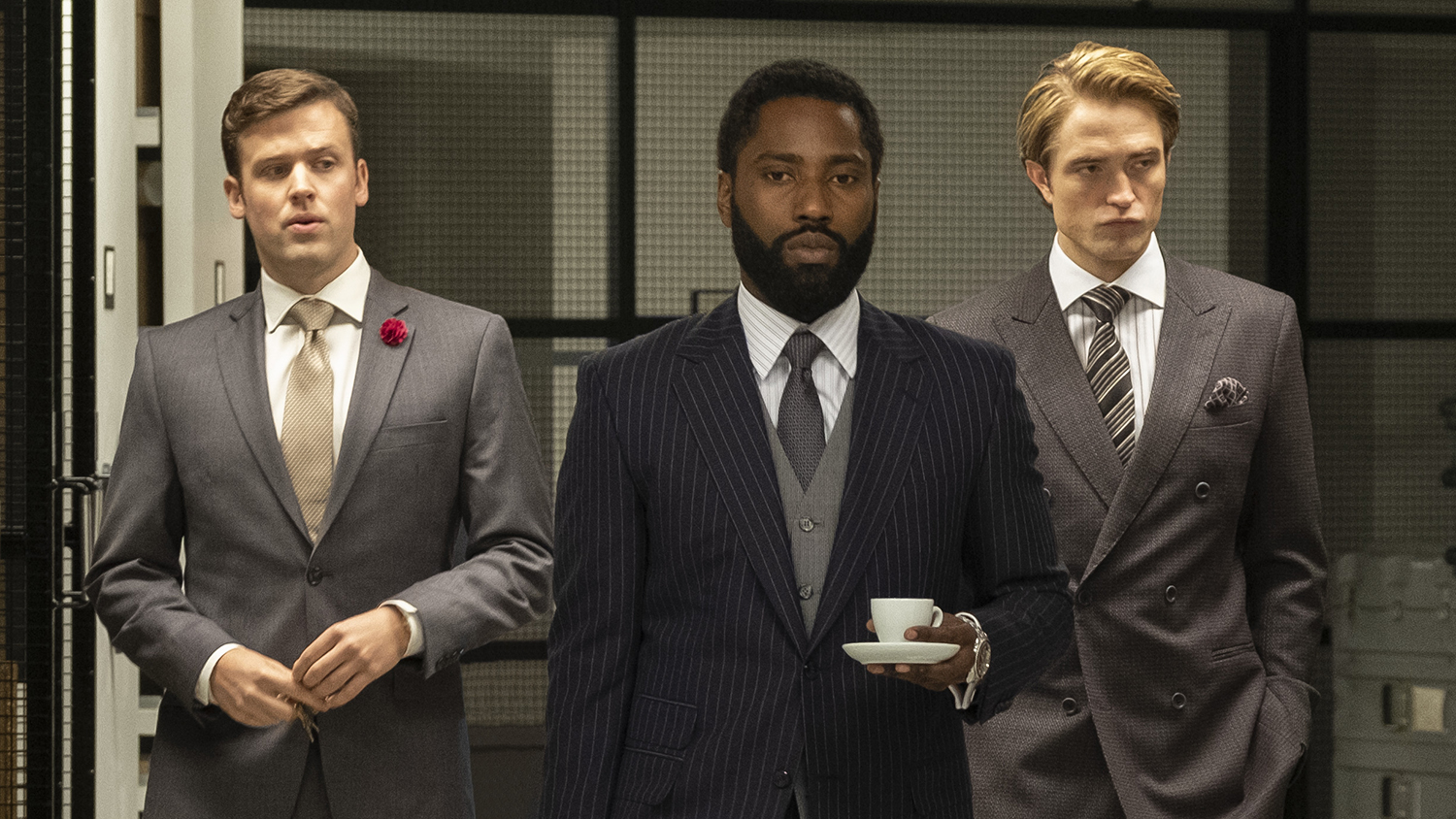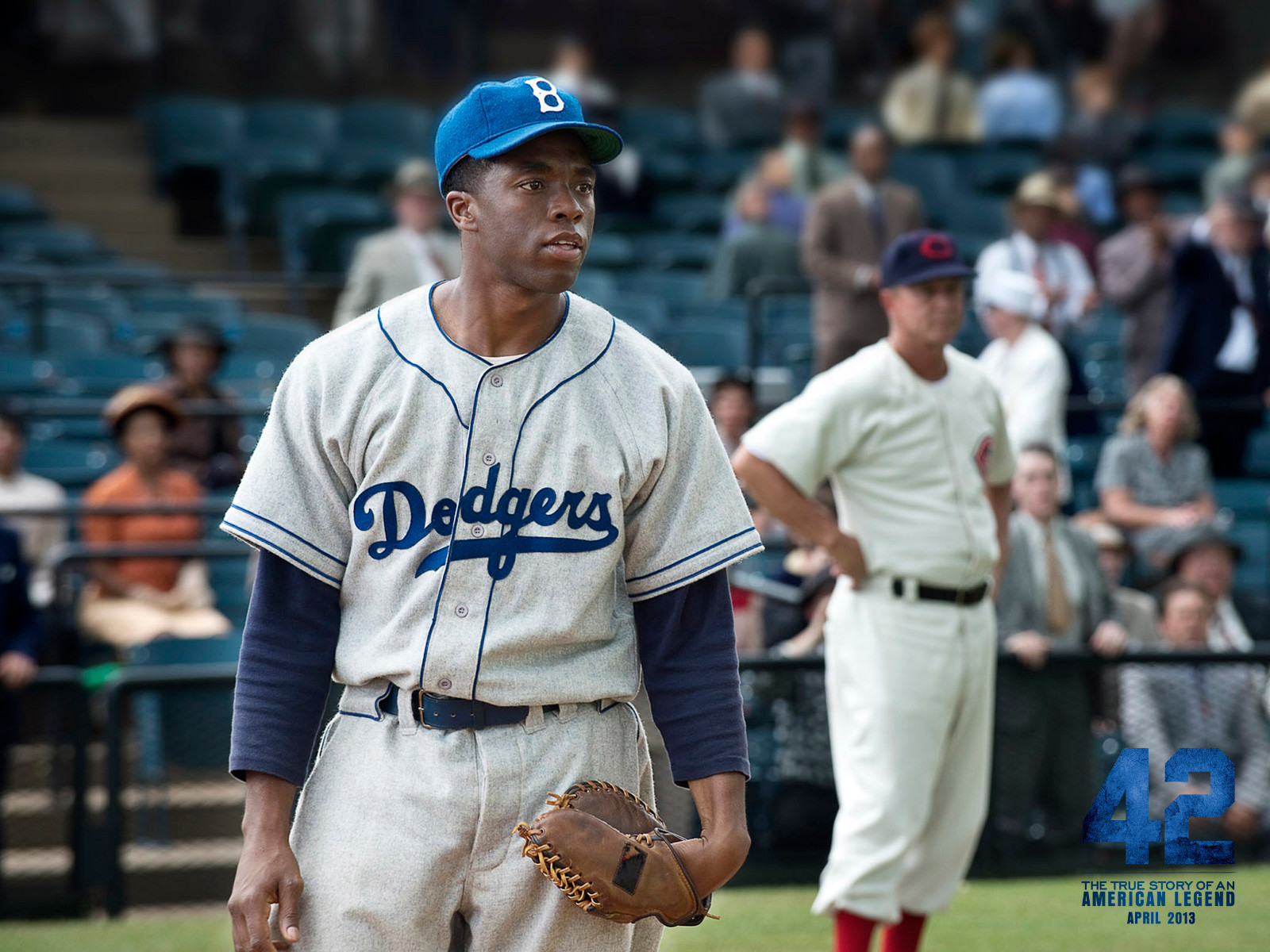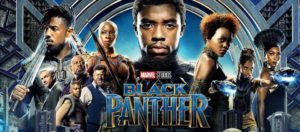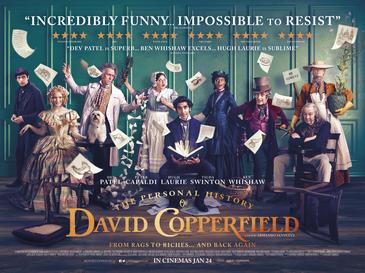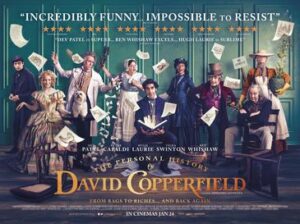Tenet
Posted on August 31, 2020 at 8:00 am
B| Lowest Recommended Age: | High School |
| MPAA Rating: | Rated PG-13 for violence and intense action |
| Profanity: | Some strong language |
| Alcohol/ Drugs: | None |
| Violence/ Scariness: | Extended, intense peril and violence, characters injured and killed, guns, chases, explosions, weapons of mass and total destruction, torture |
| Diversity Issues: | None |
| Date Released to Theaters: | September 4, 2020 |
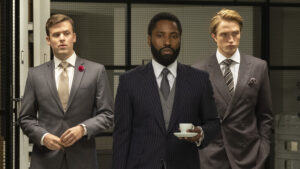
Christopher Nolan’s “Tenet” is like a three-dimensional chess game. The storyline is mind-bendingly intricate, with thought-provoking fantasy and juicy twists. But the characters are never more than one-dimensional, like the pawns, rooks, and bishops on the chess board, their sole defining characteristics are the way they look and move. The brilliantly-staged action sequences punctuate a muddled story-line with under-written characters and — its biggest failing, a boring bad guy.
The story’s leading man does not have a name. In the most eye-rolling cognomen since M. Night Shyamalan dubbed his muse-like character in “Lady in the Water” “Story,” our hero is known only as Protagonist. He even insists, “I am the protagonist!” a couple of times, so it seems to be more than a name. Fortunately for the movie and the audience, Protagonist is played by the infinitely engaging John David Washington (“BlackKklansman”) who brings so much grace and charm to the role we forget how under-written his character is. He conveys with a gleam in his eye and a shift of his shoulders more than any line of dialogue in the script.
The opening scene is a stunner. We are brought into the most civilized of environments, a concert hall, with an audience rustling in anticipation of a symphony orchestra performance. And then suddenly, it turns into the most uncivilized of situations, with terrorists breaking in to, well, we do not know exactly what, except that they are clearly combat-trained and equipped and ruthless. They carry an assortment of international law enforcement patches so they can select whichever one is right for the moment. Nolan expertly conveys the contrast between the control of the terrorists and the chaos they create.
Protagonist is one of the guys in combat gear, and he seems to be, maybe, a good guy? There to extract some dignitary? Anyway, he is soon put in a position where he must decide whether to allow himself to be tortured into giving up information or commit suicide with a cyanide capsule. He chooses the capsule, and wakes up in a hospital room. It was a test of whether he was all in. He passed.
And now he has a new assignment, the darkest of dark ops, and the direst of end-of-times consequences if he does not succeed. Even if I wanted to spoil it, I really couldn’t, as it is pretty murky, but basically someone has figured out how to make time go backward and that is very, very bad, especially if — say it with me — it gets into the wrong hands. He gets some help from Michael Caine, with one brief scene keeping his record of appearing in Christopher Nolan films going. And he gets some more from a charmingly raffish guy named Neil (Robert Pattinson), who always seems to be smiling about some delicious secret. (SPOILER ALERT: He is.) Note: compliments to costume designer Jeffrey Kurland for gorgeous suits, in the words of Dorothy L. Sayers, “tailored to the swooning point.”
Enter the bad guy, who seems to be a character from another movie, like a shlocky Bond rip-off. Kenneth Branagh plays Andrei Sator, an expat Russian oligarch, international arms dealer, and all-around sadist. His estranged wife is the elegant art dealer Kat (Elizabeth Debicki). And if that isn’t an overused enough character sketch, there’s this: he enjoys blackmailing and manipulating her by threatening to keep her away from their young son. Protagonist is just the kind of cowboy to want to save the day for her while he’s saving the world.
There’s a highway chase with some vehicles going forward in time and some backward that is a wow and a half. But it is a combination of too much (nearly 2 1/2 hours long, with so many McGuffins to retrieve I thought I was back with Harry Potter and the horcruxes), too little (I’m not sure the backwards time thing all fits together — maybe there will be some charts online from fans who are willing to sit through it four or five times to figure it out), and the complete mess that is the Sator character, who not only is an under-imagined cliche but on top of everything else not only suffers from explaining bad guy syndrome but actually is so committed to going into detail about what he is doing that he actually gets on the phone to make sure he provides even more. Murky as it all is, it gets even murkier because of some muffled sound when people are speaking, especially when part of the whole backwards time thing for some reason have to have oxygen masks over their faces.
“Don’t try to understand it,” one character tells another. The best way to enjoy this movie is to follow that advice.
Parents should know that this film includes extended and occasionally graphic peril and violence with international arms dealers, guns, bombs, explosions, chases, torture, and terrorism. There is some strong language.
Family discussion: Why does the main character insist that he is the protagonist? Which twist surprised you most? Were there clues you missed?
If you like this, try: “Edge of Tomorrow”

